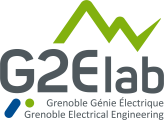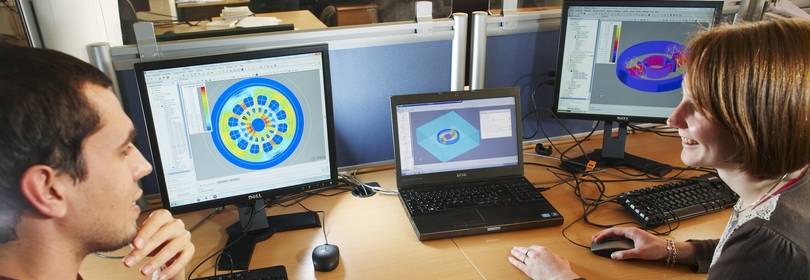- A General model combining Preisach model (hysteresis) and Stoner-Wolfarth model (vectorial aspects) has been implemented in Flux.

Magnetization profile
- Original hysteresis scalar and vectorial model based an an analogy with chemical reactions to model ferromagnetic sheets
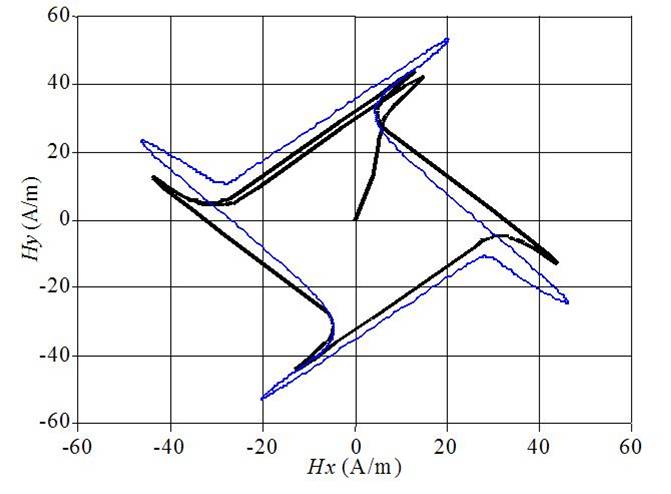
- Dynamic hysteresis in magnetic materials: A general model for taking into account eddy currents due to the movement of magnetic walls has been proposed. It is based on the concept of average fields and allows expressing the local dynamic effects at the macroscopic scale. The model is introduce in the B(H) law through a structural parameter related to the number of magnetic walls. The identification of this parameter, which is depending on B and dB/dt, allows simulating the behaviour of the material very satisfactorily, whatever the excitation.
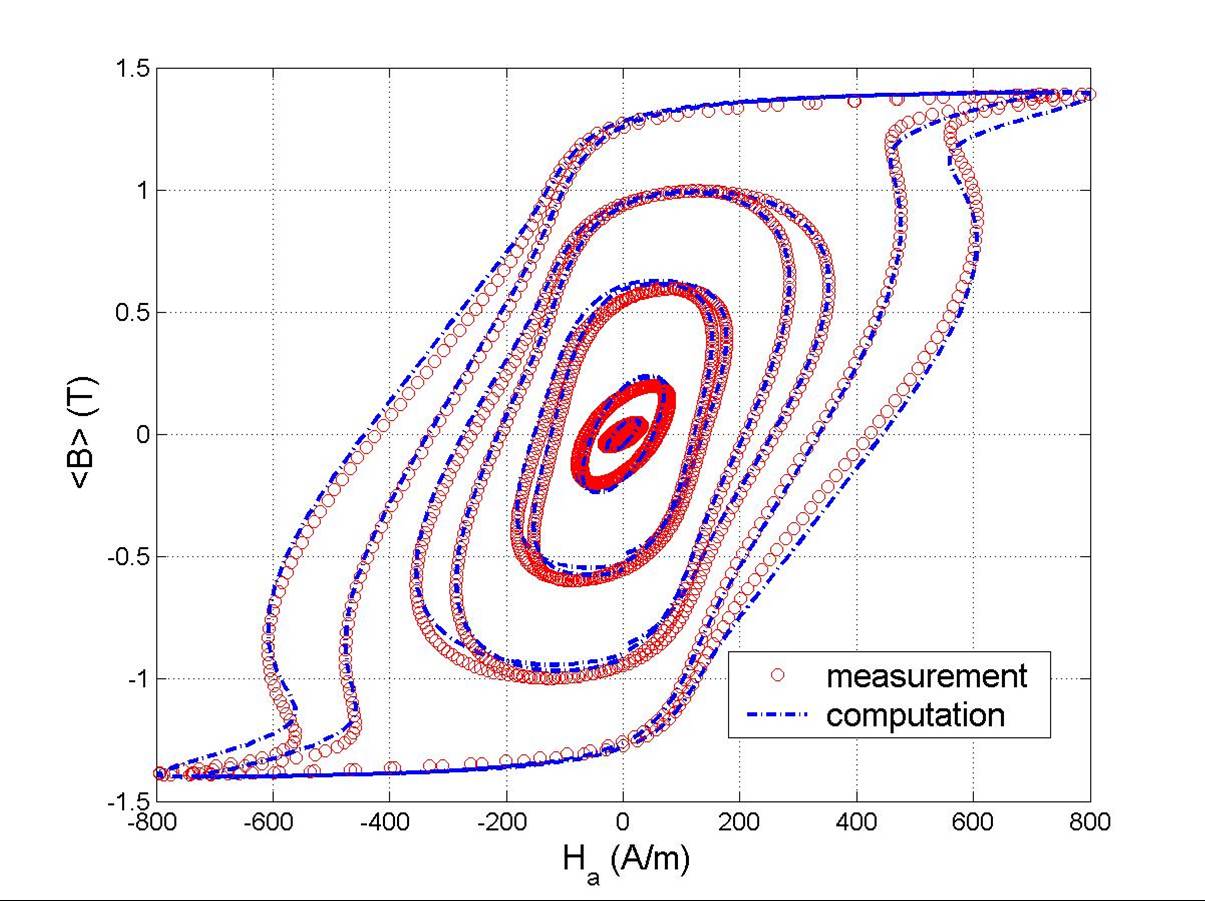
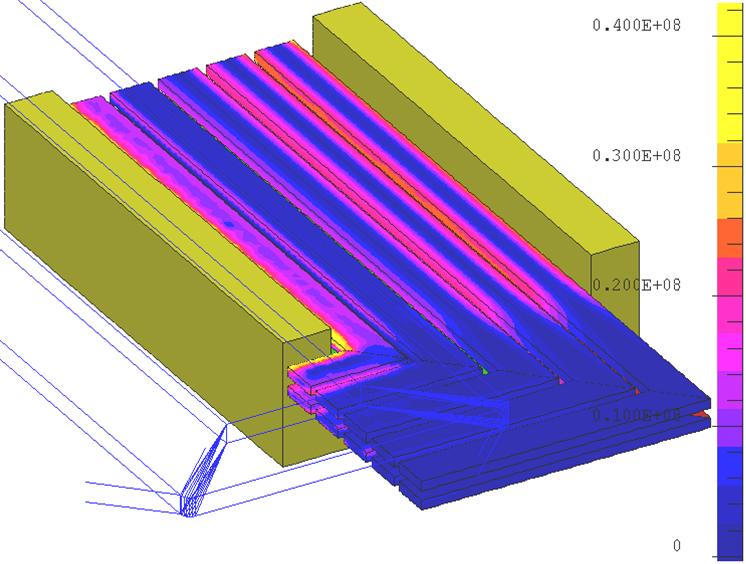
In collaboration with the team MADEA, we develop an activity on the modeling of superconducting devices in two and three dimensions. The superconducting materials are represented by a power law, representative of the behavior in high temperature. The finite element simulation can compute dynamic performances (losses, depreciation) of devices (magnetic bearing, limiter, superconducting cable).

3D modeling of superconducting cable (European contract BIG-POWA)

